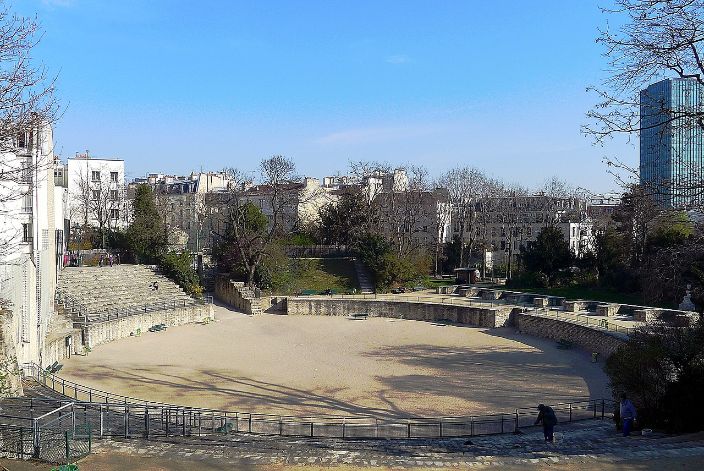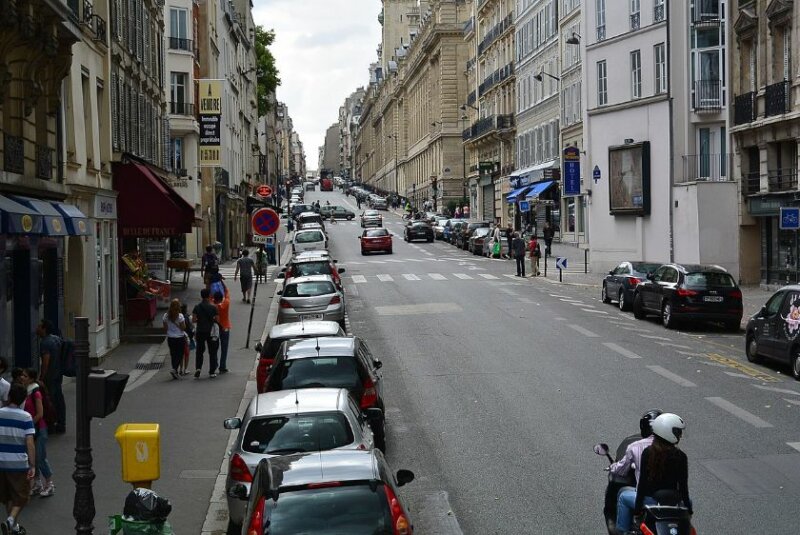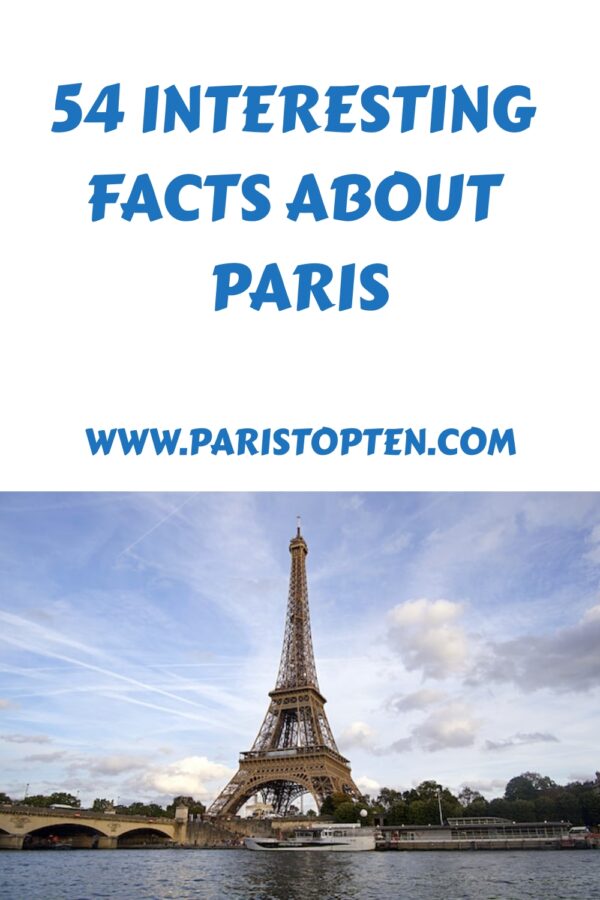When most people think of Paris, France, they think of its beautiful canals and bridges, the Eiffel Tower, its fashion industry, and its rich history. It has been a melting pot of creativity for centuries. The City of Love has also been witness to some mind-blowing facts that have fascinated the world for generations.
Most people are familiar with Eiffel Tower’s zaniness, Notre Dame’s stunning Gothic architecture and the Moulin Rouge’s sexy cabaret. But it takes an insider to know these interesting and fun facts about Paris, France.
If you’re traveling to Paris for a short period of time, this article will give you an insight into its history and culture. Learning interesting facts about a place always adds to the overall experience of visiting. Let’s find out these interesting and fun facts about Paris, France.
Table of Contents
- Fun Facts about Paris, France
- Its first name was “Lutetia Parisorum”
- Lutetia is now known as Ile de la Cité
- The Romans occupied Paris
- Ruins of Roman bathhouses still exist
- The oldest street in Paris was built by Romans
- The oldest standing bridge in Paris is called The New Bridge
- Historical Paris has 3 main parts defined by the Seine River
- Paris has a circular shape
- The Storming of the Bastille signaled the beginning of the French Revolution
- Paris is known as the City of Love not just because people said so
- Paris is sometimes referred to as “La Ville Lumiere”, the City of Light
- The fashion history of the Fashion Capital was intriguing
- The rich, not the designers, used to decide what was fashionable and not
- Paris is the Fashion Capital of the World
- French women were not legally allowed to wear pants before 2012
- Paris Syndrome is real
- Eiffel Tower was constructed to be an attraction only
- The Eiffel Tower was supposed to be demolished, but was saved by radio
- Professional photographers can‘t share night photos of the Eiffel Tower
- Hitler ordered the destruction of Eiffel Tower during World War II
- The Eiffel Tower has a total of 1,665 steps to the top
- Eiffel Tower’s repainting is done by hand
- Notre Dame Cathedral is the most visited attraction in Paris, not Eiffel Tower
- Notre Dame Cathedral’s largest bell is named “Emmanuel”
- Paris is home to the world’s largest art museum
- The Louvre Museum was originally built for defense
- The Finance Ministry was kicked out of the Louvre
- People once believed that the Louvre Pyramid was the work of the devil
- Paris has the most popular museum in the world, The Louvre Museum
- The Mona Lisa is the world’s most viewed painting
- The Mona Lisa was stolen by a former employee
- The theft of the Mona Lisa made the painting more popular
- It took 30 years to build the Arc de Triomphe
- Disneyland Paris is actually not in Paris
- There are smaller versions of the Statue of Liberty in Paris
- There is a law about how baguettes should be made
- The city has the world’s largest wholesale food market.
- “Fluctuat nec Mergitur” is the city’s motto.
- Paris doesn’t have the most French-speakers
- Paris has one of the world’s highest living costs
- Nicolas Flamel was real, and he owned the oldest house in Paris
- There is no stop sign in Paris
- Underneath the streets of Paris lie the bones of millions of people
- Putting “Love Locks” on Paris bridges is now prohibited
- There is a museum of sewers in Paris
- The First Photograph of a person was taken in Paris
- Several millions of people ride the Paris Metro daily
- The most beautiful avenue in the world is in Paris
- The finale of Tour de France is held in Paris annually
- The Obelisk in the Place de la Concorde has another purpose
- There are two natural islands in River Seine
- The oldest prison in France is La Conciergerie in Paris
- Paris houses the most prominent cabaret in history
- Visiting Paris, France
- Interested in Learning More Amusing and Exciting Information About Paris, France?
Fun Facts about Paris, France
Its first name was “Lutetia Parisorum”
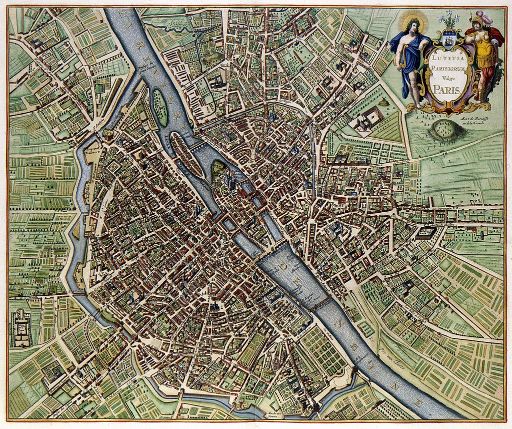
We’ll start the list of fun facts about Paris with its first name. The forerunner of modern-day Paris was founded by a tribe of Celts around 300 BC. The Parisii, an ancient Gaulish tribe, called their capital city “Lutetia Parisiorum.”
Lutetia (meaning “site near a swamp”) was one of the Parisii tribe’s most important centers along the Middle Seine. It was situated on the southern bank of River Seine. Lutetia was an important trading post because of its position at the confluence of land and marine routes along the Seine River.
When the Merovingian kings of France made the city their capital in the 5th century, it officially changed its name to Paris.
Lutetia is now known as Ile de la Cité

Formerly known as Lutetia, today’s Ile de la Cité is Paris’s oldest area. From this central point, the city expanded outward.
The Pont Neuf, Pont de l’Archevêché, and Notre Dame Cathedral are just a few of the famous Paris landmarks that may be found here. It is located smack dab in the heart of Paris, with Châtelet to the north and Saint-Germain-des-Prés to the south.
The Romans occupied Paris
In the grand scheme of European history, the Roman occupation of Paris was rather brief. As early as around 60 BCE, their army arrived in the land occupied by Gallic tribes, most notably the Parisii, and engaged in conquering battles. The Gauls banded together under the leadership of Vercingetorix to defeat the Romans at Alesia.
Another battle occurred, and this time the Romans emerged triumphant and captured Vercingetorix. The Romans seized it in the first century BCE and rebuilt it into a Roman metropolis over the course of several decades.
See Related: Arc de Triomphe: Exploring the Iconic Paris Arch
Ruins of Roman bathhouses still exist

The Romans built bathhouses to ensure the residents were comfortable. One of the fun facts is that the Cluny Museum (the Musée National du Moyen ge) now houses some of the baths’ surviving artifacts.
Over time, the baths were reduced to rubble, but they were unearthed again around the 12th or 13th century. The baths’ remnants were incorporated into the layout of the monastery and college at Cluny
See Related: Best Catholic Churches in Paris, France
The oldest street in Paris was built by Romans
Roman cardo maximus, the main thoroughfare through Lutetia and the inspiration for the grid arrangement of the rest of the city, was the street now known as Rue Saint-Jacques in the 5th Arrondissement. It was built by Roman engineers, who picked the area’s highest point and drew a line to the Seine so the road could cross the river and link up with the Roman road to Spain.
You may find this highest point between the Pantheon and the Jardin du Luxembourg, at the intersection of Rue Saint-Jacques and Rue Soufflot. You can observe how Rue Saint-Jacques slopes to the river from that location nowadays.
See Related: Winters in France: A Comprehensive Guide to the Season
The oldest standing bridge in Paris is called The New Bridge

This Paris fun fact is indeed funny and interesting. As Paris’s oldest bridge, it is amusing and a little baffling that it is called Pont Neuf (New Bridge). In the early 17th century, the bridge stood apart from the others in the city because it was the first not to have buildings constructed directly on top of it. Pavements were installed so pedestrians would not have to deal with the mud and traffic hazards of the road.
See Related: Things To in Paris on Bastille Day: A Comprehensive Guide
Historical Paris has 3 main parts defined by the Seine River

The Seine divides historical Paris into three sections. This is one of my favorite Paris facts because it shows how civilization in Paris developed.
The Île de la Cité, located in the middle of the city, was the political and religious heart of the region. The Left Bank (Rive Gauche) of the Seine has traditionally been the center of intellectual life, while the Right Bank (Rive Droite) has generally been the seat of economic life. However, these differences have become muddled in recent decades.
These diverse activities came together in the heart of France, creating a setting that was bursting with life.
See Related: When Does the Eiffel Tower Sparkle? A Guide to its Stunning Light Display
Paris has a circular shape

Only a few people know this fun fact. Paris has kept the circular shape of the early city for the most part throughout its centuries of growth. Its bounds have expanded to encompass the surrounding towns which are typically constructed around monasteries or churches and are frequently the site of a market.
From the mid-14th through the mid-16th centuries, the city expanded primarily eastward; since then, it has expanded westward. The city’s expansion is especially apparent in its architecture and urban planning.
See Related: Hotel Rose Bourbon
The Storming of the Bastille signaled the beginning of the French Revolution

On July 14, 1789, Parisian revolutionaries and rebellious troops seized and demolished the Bastille, a royal castle and jail that had come to represent the oppression of the Bourbon rulers. This monumental action marked the start of the French Revolution, a decade of political crisis and terror.
Being an important part of Paris history, the storming of the Bastille is celebrated yearly as an official holiday for the nation.
See Related: Hôtel Aiglon – Boulevard Raspail Paris 14
Paris is known as the City of Love not just because people said so

This is one of the fun facts about Paris that I want to share so badly. The moniker “City of Love” has a meaning behind it.
Paris is known as the world’s art capital. Romanticism blossomed in the city. This kind of art emphasizes powerful emotions, imagination, and nature idealization. This is why you feel whimsical when you look at Romantic paintings!
The French capital also has many amazing spots to propose, like the Eiffel Tower, Notre Dame Cathedral, Tuileries Garden, and Louvre Pyramid. Many couples get engaged in Paris, which adds to its status as the City of Love.
Aside from these, Paris has many attractive and romantic areas to explore, making it a top honeymoon destination.
There is also a Temple of Love in Versailles, Paris, called Temple d’Amour. It was built at the request of Queen Marie-Antionette to commemorate the king and queen’s love. If you go there, you’ll see couples kissing in the temple’s center, hoping to deepen their bond.
Many iconic romantic novels are set in Paris, too! These include works by Victor Hugo, Ernest Hemingway, and Oscar Wilde. The Hunchback of Notre Dame, Les Miserables, and Phantom of the Opera are some works that contributed to Paris’ romantic reputation.
See Related: Villa Des Ambassadeurs
Paris is sometimes referred to as “La Ville Lumiere”, the City of Light
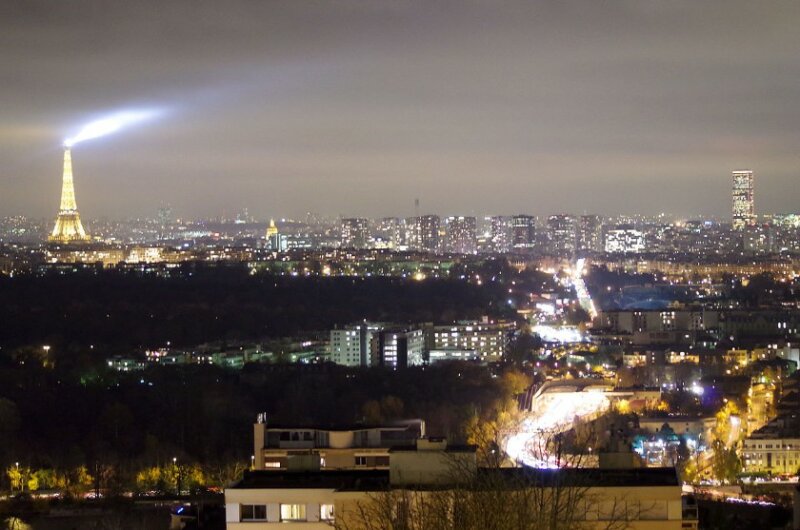
Many people know this fascinating fact about Paris, but only a few know how Paris came to be known as the City of Light. The name references the 17th century and the Age of Enlightenment. Intellectuals would rush to the city to share ideas and developments, and these intellectuals would be referred to as “lights.”
In a more literal sense, it was Europe’s first city to have streetlights. Of course, the Eiffel Tower now illuminates the area at night with its brilliant lights. Paris is also known as the City of Love, the World Fashion Capital, and the City of Art.
The fashion history of the Fashion Capital was intriguing

Paris is home to some of the most important fashion houses in the world. You can find Chanel, Givenchy, Louis Vuitton, and many more here. The French also have a love for luxury goods that is unsurpassed. They are willing to spend more on quality than any other nation.
You must be wondering how Paris became the fashion capital of the world. Although the term “Haute Couture” did not appear until the 18th century, the French fashion sense had long been a source of adoration and disdain.
Fashion in Paris was not simply about clothing; it was about social status and politics. The Revolution had occurred and the idea that anyone could be equal to anyone else was still relatively new. Fashion became a way for people to show off their wealth—or lack thereof—and their political leanings.
The rich, not the designers, used to decide what was fashionable and not
In the early centuries of the modern era, the wealthy dictated what their subjects should wear to fashion houses. This is true until Charles Worth, the father of modern Haute Couture, did something different.
Charles Worth developed designs from scratch, branded his garments with his name, and presented them to clients using live models for feedback. This became a hit and designers began to define what was in style ever since.
Paris is the Fashion Capital of the World
Back in the day, any aspiring fashion designer who wanted to make it big was expected to relocate to the French capital. They either join an established couture house or strike out independently to build their own.
Fashion journals were either headquartered in Paris or relied heavily on the city as a source of inspiration and information. When it came to fashion, Paris was considered holy by Western ladies.
French women were not legally allowed to wear pants before 2012
One of the most interesting facts about Paris is that in 1800, the city of Paris passed a fashion code that prohibited women from wearing pants without obtaining a permit from the authorities. The fact that this statute wasn’t officially repealed until 2012 is astonishing.
Parisian ladies have worn pants without problem for decades despite this. With no regard for this antiquated guideline, several Parisian fashion brands have also featured pants in their designs for years.
Paris Syndrome is real
What do you know about Paris Syndrome? It is an assortment of psychological and physical symptoms encountered by visitors who are first-timers and realize that Paris isn’t, in reality, the way they imagined it was.
It’s no secret that the depiction of Paris in the world of entertainment is romanticized. When we see Paris in advertisements, the most common image is a pretty, attractive, and sophisticated place.
Despite the city’s rich cultural hotspots, architectural pleasures, and outstanding restaurants, some tourists cannot enjoy a trip to Paris. Infrequent visitors to the City of Light may suffer from “Paris syndrome,” a mental disorder characterized by gastrointestinal distress, visual hallucinations, and accelerated heartbeat.
Many specialists acknowledge Paris syndrome as a genuine, albeit uncommon, phenomenon, although it is not listed in the Diagnostic and Statistical Manual of Mental Disorders (DSM).
Japanese people usually experience Paris Syndrome because of the difference in culture and their high expectations of Paris.
Eiffel Tower was constructed to be an attraction only

If you’re thinking the Eiffel Tower was built for the purpose of communication, you’re wrong. It was constructed to be one of the centerpieces of the 1889 Paris World’s Fair.
In that year, the World’s Fair took up the whole Champ de Mars in the French capital. It was all about the huge iron and steel buildings that were the most important industrial development at the time.
The Eiffel Tower was originally referred to as “the 300-meter Tower.” The entrepreneur Gustave Eiffel’s name eventually became associated with the structure, because he proposed the design used. As the World’s Fair kicked off on May 15, 1889, so did the Tower.
The Tower was the subject of much debate in the art community before and while it was being built. However, more than 2 million people visited the Louvre in its first year alone, all because of the boldness of its architecture and design.
See Related: Best Things to do Near the Eiffel Tower
The Eiffel Tower was supposed to be demolished, but was saved by radio
After the Tower was built and opened for the Paris Exposition Universelle in 1889, it had to be given back to the City of Paris because Gustave Eiffel had only been allowed to use the land for 20 years. However, its employment as a massive radio antenna prevented its demolition.
Under the Champ de Mars, a permanent station was established in 1909 and the Eiffel Tower was instrumental in developing radio broadcasting as both a transmitter and a receiver. The Eiffel Tower was successfully rescued from demolition.
As of January 1, 1910, Gustave Eiffel’s concession was extended for another 70 years. Regarding radio transmissions, the Tower has remained in use ever since.
See Related: Best Hotels in Paris St. Germain

Paris is called the City of Light. When you next find yourself admiring the radiance of Paris’s most famous monument, La Tour Eiffel, you might consider taking a photo of the sight.
It is not illegal to photograph the Eiffel Tower at night. In fact, anyone can take images and share them on social media. Professionals, on the other hand, are in a different scenario.
The Eiffel Tower’s lighting and shimmering lights are protected by copyright. Therefore professional use of nighttime photos may incur a cost. Professionals should contact the Eiffel Tower’s management business for image usage terms.
See Related: L’Adresse
Hitler ordered the destruction of Eiffel Tower during World War II
World War II almost destroyed Eiffel Tower. Hitler had directed his military officer, Dietrich von Choltitz, to place explosives around significant monuments in Paris, including the Eiffel Tower, and to blow these devices immediately if any military force (French liberation forces) was spotted.
Choltitz, on the other hand, did not agree and discovered that Hitler had gone insane by then. He surrendered to the forces later on.
The Eiffel Tower has a total of 1,665 steps to the top

It was once the tallest man-made building, after all. You’d have to climb 1,665 stairs from the esplanade to the very top of the Eiffel Tower. But if you’re just visiting, you won’t have to do all of them.
Only the second story is accessible to guests, and getting there requires 674 steps if you want to walk there. This will take approximately 30 minutes.
The observation deck offers stunning views of Paris. You won’t have to climb the remaining steps if you wish to get higher than the second story because you can buy a lift pass.
Eiffel Tower’s repainting is done by hand
Another of the interesting facts about Paris, France, and the Eiffel Tower is that the building is painted by hand. More or less 60 tons of paint are used for every repainting.
Since its completion, the tower has been painted 19 times, an average of once every seven years. The repainting in this time cycle is done according to the plan laid out by Gustave Eiffel.
The colors used have also changed. It’s shifted from reddish-brown to chestnut to yellow! “Eiffel Tower Brown” has been used since the 1960s.
Notre Dame Cathedral is the most visited attraction in Paris, not Eiffel Tower

This fact is true before the fire, at least. Most people think that the Eiffel Tower is the most visited monument in Paris, so this might come as a surprise.
According to data from 2019, the Notre Dame Cathedral had about 13 million visitors and the Eiffel tower had almost 7 million visitors. This shows that almost twice as many people go to Cathedral Notre Dame as to the Eiffel tower.
See Related: Cathedrale Notre Dame
Notre Dame Cathedral’s largest bell is named “Emmanuel”

The cutest of the interesting Paris facts is that they named the bells in Notre Dame Cathedral. The bourdon Emmanuel, cast in 1686, is the largest, oldest, and most well-known of the bells at Notre Dame. Expert campanologists agree that Emmanuel is among the best bells in Europe, and the bell’s use in the 1944 liberation of Paris earned it national landmark status.
Emmanuel is also the only bell that survived the French Revolution. The original bells of Cathedral Notre Dame were melted down for use in making cannons and currency at that time.
Paris is home to the world’s largest art museum

With an area of 782,910 square feet, the Louvre in Paris, France, is the world’s largest art museum. This museum is part of the Louvre Palace and is a historic site in Paris.
In 1692, this palace was used by King Louis XIV to house two art schools. A century later, the Louvre Museum opened with 537 paintings. It now has about 38,000 pieces in it.
The Louvre is also the most popular museum in the world, with 7.4 million people going there each year.
The Louvre Museum was originally built for defense

Louvre construction began as King Philippe II of France prepared to embark on the Crusades. The city of Paris needed protection from invasion; therefore, Louis decided to construct walls around the city.
The Louvre was built to strengthen the defenses in a vulnerable spot along the Seine.
The Finance Ministry was kicked out of the Louvre

As part of the Grand Louvre renovation, the French Finance Ministry had to vacate its quarters in the museum’s northern wing. It would clear the way for the Louvre’s expansion and refurbishment.
People once believed that the Louvre Pyramid was the work of the devil

The enormous pyramid, designed by I. M. Pei, was heavily criticized upon completion. As soon as the idea spread, critics claimed it would ruin the area’s historic appearance.
Despite there being 673 panes of glass in the building, the myth that there are 666 is more often believed. This is the apocalyptic number associated with the devil, which is why people thought the Glass Pyramid was an abomination.
See related: Glass Pyramid at The Louvre: History & About
Paris has the most popular museum in the world, The Louvre Museum
Paris is renowned for its museums, particularly the Louvre Museum. It is the most visited museum in the world, with around 9 million people every year. The Louvre Museum is also the world’s largest art gallery.
It’s easy to see why, given that it houses some of the greatest masterpieces of all time, including the Mona Lisa, the Winged Victory of Samothrace, The Wedding at Cana, and the Venus de Milo.
The museum’s design is appealing, with millions of tourists posing in front of the beautiful glass pyramid each year.
The Mona Lisa is the world’s most viewed painting

No one should be surprised that the famous painting of the intriguing woman with the cryptic smile is the most well-known in the world. Nonetheless, that is one of the few unquestionable things about this piece of art.
Every year, approximately 10 million people flock to see the famous artwork by Leonardo da Vinci. There’s a whole room in the museum devoted to it!
The Mona Lisa was stolen by a former employee
The Mona Lisa was stolen by Italian criminal Vincenzo Peruggia in 1911. It was the twentieth century’s greatest art theft.
Peruggia, a former Louvre employee, dressed in an employee uniform and removed the painting from the wall while no one was looking. Two years later, while trying to sell it to an art dealer in his native Italy, he was finally caught. After spending slightly over a year behind bars, he led a fairly law-abiding life upon his release.
The theft of the Mona Lisa made the painting more popular
Historians claim the Mona Lisa was only known to other artists and art connoisseurs until the 20th century. That was until a former Louvre employee stole the painting in 1911 and hid it for two years.
The incident made the Mona Lisa a part of popular culture and introduced millions of people to Renaissance art.
It took 30 years to build the Arc de Triomphe

The Arc de Triomphe is an instantly recognizable symbol of the City of Light. However, many people are unaware of how long it took to construct and this is probably one of the interesting Paris facts that surprised you.
Napoleon commissioned the famed arch to commemorate the Grand Armée. The first stone of the monument was laid on August 15, 1806.
The fall of the Empire in 1815, however, brought construction efforts to a halt. They resumed building the landmark in 1824, and the arch was completed in 1830.
The Arc de Triomphe was inaugurated on July 29, 1836. However, it wasn’t officially consecrated until the hearse carrying Napoleon’s body passed through the arch on December 15, 1840.
Disneyland Paris is actually not in Paris
This is probably one of the most surprising Paris facts. Contrary to its name, Disneyland Paris isn’t really in Paris. It’s in the small town of Marne-la-Vallée, which is about 32 kilometers from the city. About 15 million people go to Disneyland Paris every year to have a great time at the world’s most magical place.
There are smaller versions of the Statue of Liberty in Paris

Did you know that the Statue of Liberty in New York was a gift from France? The French did not make a Statue of Liberty for USA alone, they also made several smaller versions of it for their country!
At least five of the said statues of liberty are in Paris, the biggest one gifted by the USA to France to commemorate the centennial of the French Revolution. The size of this replica was a quarter of that of the original Statue of Liberty and is located on Île aux Cygnes.
The other statues of liberty can be found in Jardin de Luxembourg, Musee d’Orsay, Arts-et-Metiers museum, and on top of a péniche by the Eiffel Tower.
There is a law about how baguettes should be made
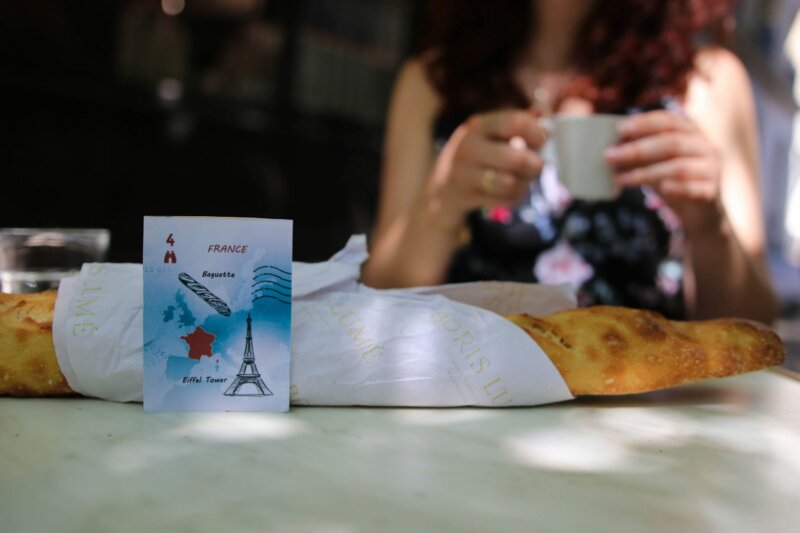
One of the most interesting facts about Paris is that they have a bread law. The Décret Pain (French Bread Law) from 1993 says that people who sell baguettes must follow certain rules. For a loaf of bread to be called a Parisian baguette, the dough must have a certain consistency and a certain size.
According to the law, a baguette must be sold on the premises where it is manufactured. Since this is the case, bakeries cannot order baguettes to ship from other locations. Finally, the bread must have only four components: wheat flour, yeast, water, and salt.
The city has the world’s largest wholesale food market.

This capital of fine dining is also home to the world’s largest food market. The great selection of fresh vegetables at Rungis International Market may be found across its two square kilometers.
Every day, 20,000 shoppers come to the market to stock up on fresh produce, seafood, meat, and dairy products. The market is normally closed to the public. It opens to merchants and their customers on the second Friday of every month.
“Fluctuat nec Mergitur” is the city’s motto.
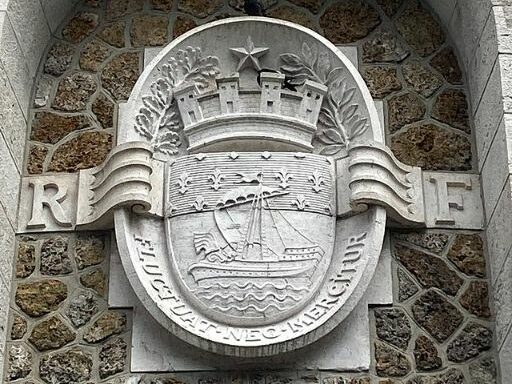
‘Fluctuat nec Mergitur’ is the motto of the City of Paris.
This motto, written in Latin, means “tossed but not sunk.” It appears on the city’s official seal, which depicts a ship.
Paris doesn’t have the most French-speakers
Surprisingly, only a few people know this odd fact about Paris. If you assume that Paris, as the capital of France, would have the world’s largest French-speaking population, you’d be wrong.
Kinshasa, the capital of the Democratic Republic of the Congo, is home to the country’s largest Francophone population. The number of French speakers in this area is far higher than that of Paris (1.21 million). In total, 29 countries use French as their official language.
Paris has one of the world’s highest living costs
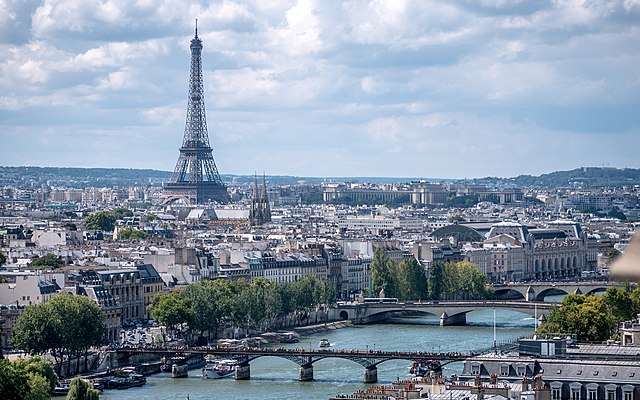
According to the Economist Intelligence Unit Worldwide Cost of Living Survey, Paris is among the world’s most expensive places to live. This is a really unwelcome piece of information for those considering a relocation to Paris. Living in Paris, particularly in downtown Paris, is too expensive.
The European Commission estimates that a monthly salary of 1,500 Euros is necessary to fulfill basic needs. A one-bedroom flat in Paris costs between 1,000 and 3,000 euros per month, putting the monthly cost for a single individual at over $1,000.
Nicolas Flamel was real, and he owned the oldest house in Paris
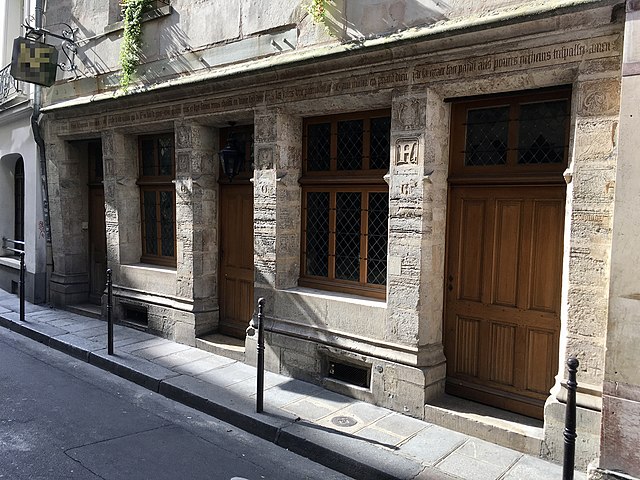
This is one of the Paris facts you’d be surprised about. You’d be right if you’re thinking about Nicolas Flamel from Harry Potter. Nicolas Flamel was a real person. He was a French scribe and owned 51 rue de Montmorency, the oldest house in the French capital.
There is evidence that Flamel passed away in 1418. He was laid to rest in Paris with a tombstone he had fashioned. After his death, he gained the reputation of being an alchemist.
Many people believed that he didn’t die and was using his alleged philosopher’s stone to achieve immortality. His name was mentioned in some Parisian literary works and even noted by famous historical figures like Isaac Newton.
Even if the historical Flamel wasn’t an actual alchemist, his enduring fame has ensured that he lives on in legend forever, even without the Elixir of Life.
There is no stop sign in Paris

Perhaps the most interesting fact about the French capital city is that although stop signs seem necessary for this busy city, it lacks them entirely.
Cars in Paris only come to a complete stop at crossroads with traffic lights. Cars on the right side of the road have the right of way at all intersections and traffic circles. While there are many traffic signs in Paris, red octagons are not among them.
However, Paris had one stop sign according to a Paris police record.
Underneath the streets of Paris lie the bones of millions of people

I know this is something unimaginable in such a romantic city, but it has a reason. Overcrowding in cemeteries led to some bodies being exhumed in the 1800s. The city council of Paris settled on the Catacombs for the burials.
Approximately six million Parisians’ bodies are buried in the long, dark tunnel of skulls and bones that still exists today. The Paris Catacombs run for kilometers under the streets of the city.
A tiny portion of the spooky Paris Catacombs is open to the public. Visit it if you like the eerie!
Putting “Love Locks” on Paris bridges is now prohibited

In the City of Lights, it’s common for couples to attach padlocks to famous bridges and throw away the keys as a sign of their love for each other.
Attaching a little padlock may seem inconsequential on a busy weekend, but bridges are crumbling under the weight of thousands of padlocks in Europe’s largest tourist hotspots. As a result, the French capital is retaliating.
Around 2008, the trend first appeared on the Pont des Arts bridge in Paris, and what started as a fun hobby quickly turned into a problem for the Town Hall. In 2015, it was reported that there were about 700,000 padlocks on the bridge, which weighed the same as 20 elephants. After a bridge section collapsed, the Town Hall removed the locks in 2015.
There is a museum of sewers in Paris

This is my favorite of the interesting facts about Paris. Until recently, travelers could go through the Paris sewers on carts suspended from the tunnel walls. Afterward, carriages pulled by miniature locomotives were used, then boats up until the 1970s.
Today, the Musée des égouts de Paris, also known as the Paris Sewers Museum, has taken the place of the carts and boats. Visitors interested in engineering, public works, or odd tourist sights, as well as admirers of Victor Hugo’s Les Misérables, should not miss this museum of the Mairie de Paris, which is hidden in the sewers beneath the Quai d’Orsay on the Left Bank.
The First Photograph of a person was taken in Paris

The very first photograph of a person was taken in Paris. Louis Daguerre captured the historical picture in 1938.
Daguerre took a photograph of the Boulevard du Temple in 1838, more well known as “Crime Boulevard,” due to the several theaters located along the boulevard that often staged murders. Two human figures were still enough for the camera to capture an image that would last forever.
On the left side of the picture, the man is seen shining his shoes. The boy who shines his shoes is also visible.
Several millions of people ride the Paris Metro daily

This is one of the most interesting Paris facts that blow minds. The Paris Metro, or “Metro de Paris,” is a fast-moving subway system that serves the capital city of Île-de-France, Paris. It is Europe’s second-busiest subway system.
It is one of the best ways to get around in terms of the number of services, how often they run, and how safe they are. It is used every day by about 7 million people.
The metro is 220 km long and has 308 stops. It is run by Régie Autonome des Transports Parisiens (RATP).
The most beautiful avenue in the world is in Paris
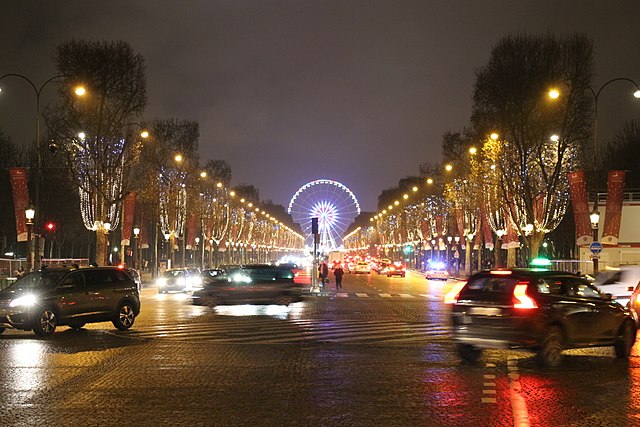
Known as “the world’s most beautiful boulevard,” the Avenue des Champs-Élysées is a must-see for any visitor to Paris. The two-kilometer area between the Place de la Concorde and the Arc de Triomphe is a popular destination for tourists and locals alike at all hours of the day and year.
The finale of Tour de France is held in Paris annually
Paris, France is most known because of its landmarks, but it is also an important place for the Tour de France.
Since 1975, the final stage of Tour de France is held on the Champs-Élysées, a famous thoroughfare in Paris. As the last part of the most famous cycling event in the world, it is a big deal to win this stage.
The Obelisk in the Place de la Concorde has another purpose

Unlike the original purpose of the Eiffel Tower, the 23-meter-high Obelisk in the Place de la Concorde square is not just a visual marvel. It is also a huge sundial.
The obelisk casts a shadow on the pavement of the Place de la Concorde at regular intervals throughout the day, revealing the time in Roman numerals inscribed there.
There are two natural islands in River Seine

The Seine River has two natural islands, île Saint-Louis and île de la Cité. Tourists can explore these islands and learn about their histories on a riverboat excursion, which is vital for knowing Paris.
Saint-Louis Island, formerly known as Notre-Dame Island and Cow Island, is located in the 4th district. Eventually, the island was developed into a residential area with five bridges leading to it. Charles Baudelaire, Marie Curie, and Camille Claudel were renowned residents.
L’île de la Cité is home to some of Paris’ most visited sites, including Sainte-Chapelle, Notre-Dame Cathedral, Hôtel Dieu, and the Conciergerie. The island is near Paris’s Hôtel de Ville and Saint-Michel Square. The island is connected to the mainland via nine bridges.
The oldest prison in France is La Conciergerie in Paris

In 1370, when Charles V and his successors moved out of the Royal Palace, the Conciergerie jail was built on the palace’s former grounds. Many people who were awaiting trial or execution were housed in the Conciergerie. Only the wealthy were given cells with benches; the rest of the inmates had to sleep on the floor.
Few people made it out of La Conciergerie Paris alive during the Terror. Hence it earned the reputation as the “antechamber of death.” In 1793, before the guillotine executed her, Queen Marie Antoinette was held there.
Paris houses the most prominent cabaret in history

Paris has a long history, and that heritage includes burlesque or cabaret bars. A large number of them are also still active.
Moulin Rouge, a Parisian cabaret, is the world’s best-known nightclub. The Moulin Rouge is a famous Parisian landmark. The bright red façade and windmill harken back to Montmartre’s former red light district.
See Related: Best Cabarets in Paris, France
Visiting Paris, France
The capital city of France is designed to be enjoyed by tourists. These streets, squares, structures, gardens, and monuments attract tourists to visit again, and many do.
The most exciting activities to experience in Paris include climbing Eiffel Tower, joining a tour of the Arc of Triomphe, and exploring the crypts of Notre Dame Cathedral. At night, have fun in one of the shows of the famous Moulin Rouge and stroll around some of Paris’s most romantic areas, such as Montmartre, or take a trip up Montparnasse Tower to see Paris from a different perspective.
Whatever you are planning to do, it’s always a great time to travel to Paris.
See Related: Is It Illegal to Work on Weekends in Paris, France?
Interested in Learning More Amusing and Exciting Information About Paris, France?
Paris is a city with culture, history, art, unique sites, and fantastic food. It’s not surprising that it’s the second-most visited place globally!
There are thousands of things to do in Paris. In fact, there’s so much to be said about the city that even a single paragraph can’t begin to describe it. But if you’ve read through all these fun facts about Paris, then your mind might be brimming with even more things to do in this incredible city on your next trip!
Related Resources
- Most Famous Historical Landmarks in Paris
- Best Parks in Paris to Visit
- The Paris Pass: Is it worth it?
- Best Paris Bastille Hotels
Please rate this post
